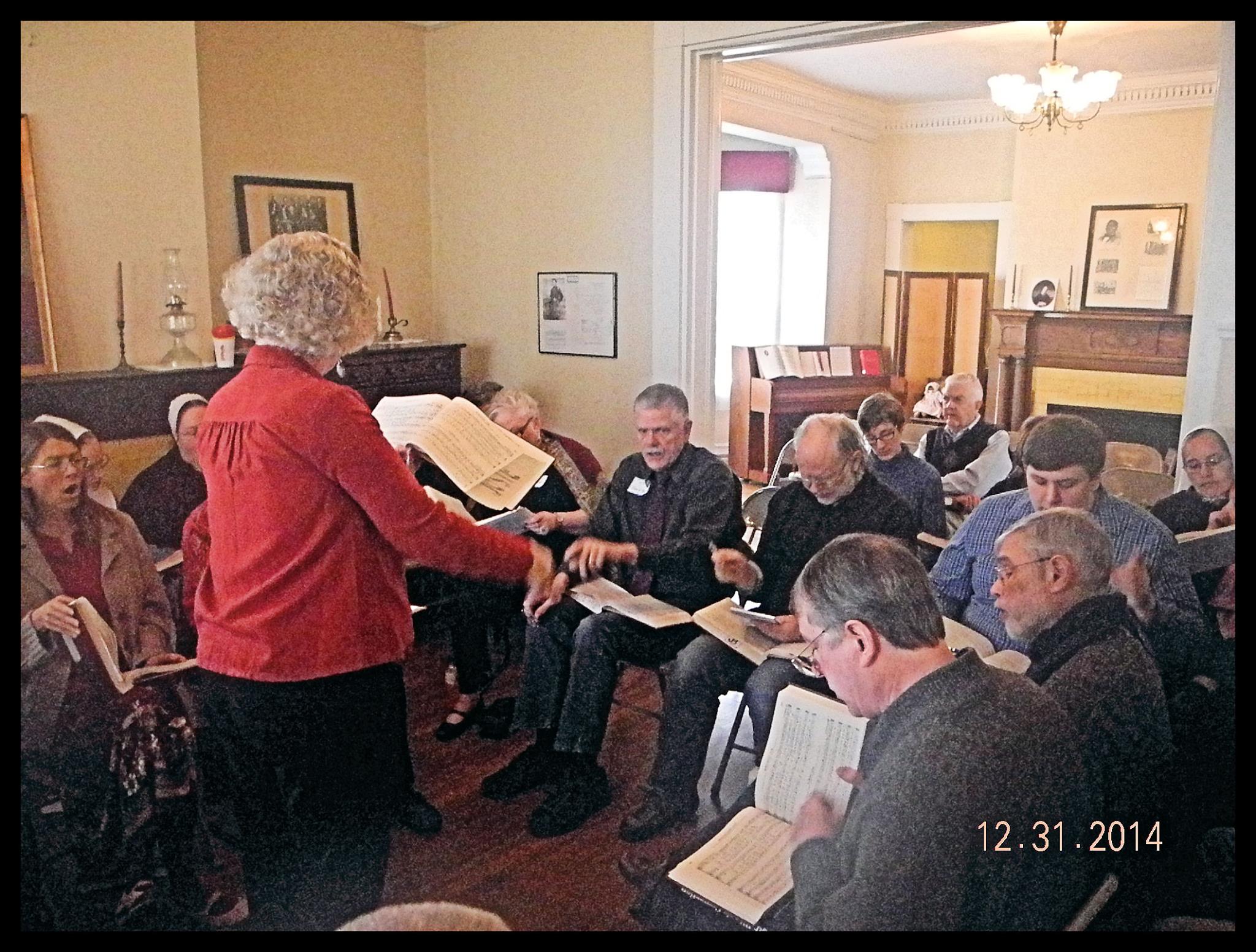by Mike Templeton
I recently met Ray Rechenberg who is deeply involved in the traditional musical form known as Sacred Harp Singing, a musical form that is extremely old, forcefully alive, and a strong thread in the weave of Appalachian culture. This is a musical form that is both very much alive even as it preserves features of our history in ways that are genuinely unique.
Ray came to Sacred Harp Singing in a way that is both circuitous and perfectly natural. Rechenberg is a “yankee, born in central Connecticut,” as he told me, but he has been singing nearly all his life. He said: “I sang in Elite Choir in high school, the U.S. Navy Choir in boot camp, and in church choirs for 30 years.” Finding himself immersed in a musical tradition historically associated with the South may appear unlikely if it were not for the fact that Ray Rechenberg is an extremely likely person to get involved with vocal ensembles.
Rechenberg first heard Sacred Harp Singing at a convention in Cincinnati in 2008. This was, as he explained, “a two-day event with 100-200 singers who were singing for as long as six hours a day. I went and heard them, and from then on, I just could not get enough of it.” He was hooked from the start, and it was not just the vocal technique and the sound, it was that Sacred Harp Singing is so much more than just the music. Rechenberg was emphatic when he pointed out that Sacred Harp Singing is by no means “a dying tradition. It is a vibrant and living form of communal singing.” Sacred Harp singing is communal and participatory. While one is certainly invited to listen, the style of singing and traditions from which it is drawn relies on community and a sense of common purpose.

Ray Rechenberg explained what we are calling “Sacred Harp Singing” is in fact shape-note singing. This method of musical notation, designed for people who are not necessarily trained in music in the classical methods, dates back quite a long time. “It goes back to the 11th Century when an Italian monk devised what we now call shape notes. The roots of shape-note singing is religious, but the music and the tunes were written by all kinds of people over the centuries,” he explained. “After it was brought to the United States, it took hold in the rural South over a period from about 1820-1850.” Thus, shape-note singing has become an indelible feature of the musical and cultural traditions of the American South. This necessarily includes vast areas of the Appalachian region.
Appalachian scholar Ben Fink is the co-founder of the East Kentucky Double All-Day Singing which is a major event in Sacred Harp Singing in the Appalachian region. He wrote in an article in Appalachian Voices by Rachael Kelley (“Shape-Note Singing: A Living Tradition of Musical and Social Harmony”) that the Appalachian region has historically played a major role in the preservation of this type of singing and continues to sustain the tradition to this day. Fink echoed the sentiments of Ray Rechenberg when states that “shape-note singing is not an act of preservation. Rather, it is the practice of something alive, well, and meaningful to its community.”
Ray explained some of the rudiments of shape-note singing. “Shapes are assigned for each note. The notes are sung as “fa,” sol,” “la,” and “mi,” before singing the actual text,” he explained, and rather than writing the different registers (tenor, soprano, baritone, etc,), “we sing the shapes for our part.” The songs are in the Sacred Harp Singing book, which is laid out so that the text and the shape-notes are visible to the singers as a single page. Just as important to the communal nature of shape-note singing is the way the singers are arranged. Rechenberg told me, “We sit in a square and sing towards the leader in the middle of the square.” The orientation of this type of music is one in which the participants are arranged as a group who are engaging each other. The tendency toward tight-knit groups would appear to mirror the tight-knit communities within which shape-note singing found its place in American cultural life and one of the main reasons it remains alive today.
Ray Rechenberg has sung with Scared Harp Singers all over the country. He has travelled to Alabama, Georgia, the west coast, New England, and as far away as Germany. Rechenberg is devoted to shape-note singing because of, as he says, “the vibrancy of the music and the fellowship of the event.” Sacred Harp Singing, or shape-note singing, is foremost a communal event, one that brings people together for the perhaps most elemental of reasons: to lift the human voice in a form of harmony that is unifying and inspiring. The Urban Appalachian Community Coalition works hard to identify and shine a light on these forms of Appalachian culture—these modes of culture that preserve our heritage even as they remain fully alive. They also have a profile in our Cultural Resources Directory you may visit.
For gatherings of Sacred Harp Singing in the area:
Cincinnati: http://ej345.com/CincySacredHarp/
Dayton: http://Daytonsacredharp.org
Columbus: http://Columbussacredharp.org
Mike Templeton is a writer, independent scholar, barista, cook, guitar player, and accidental jack-of-all-trades. He is the author of the forthcoming The Chief of Birds: A Memoir. Available later this year from Erratum Press, and Impossible to Believe, forthcoming from Iskra Books. Check out his profile in UACC’s new Cultural Directory. He lives in downtown Cincinnati with his wife who is a talented photographer. They spend their free time walking around the city snapping photos. She looks up at that the grandeur of the city, while Mike always seems to be staring at the ground.


Delightful!